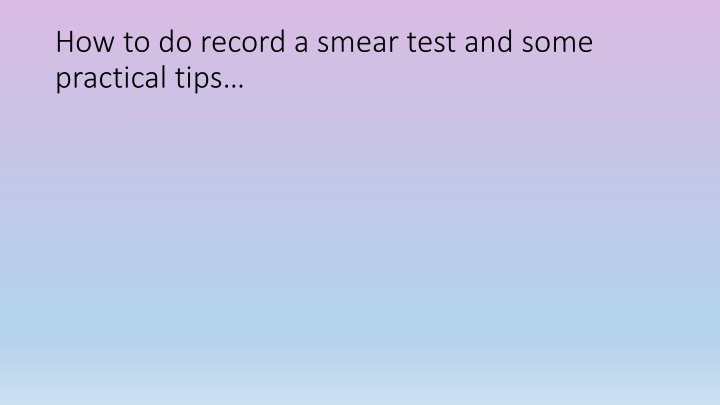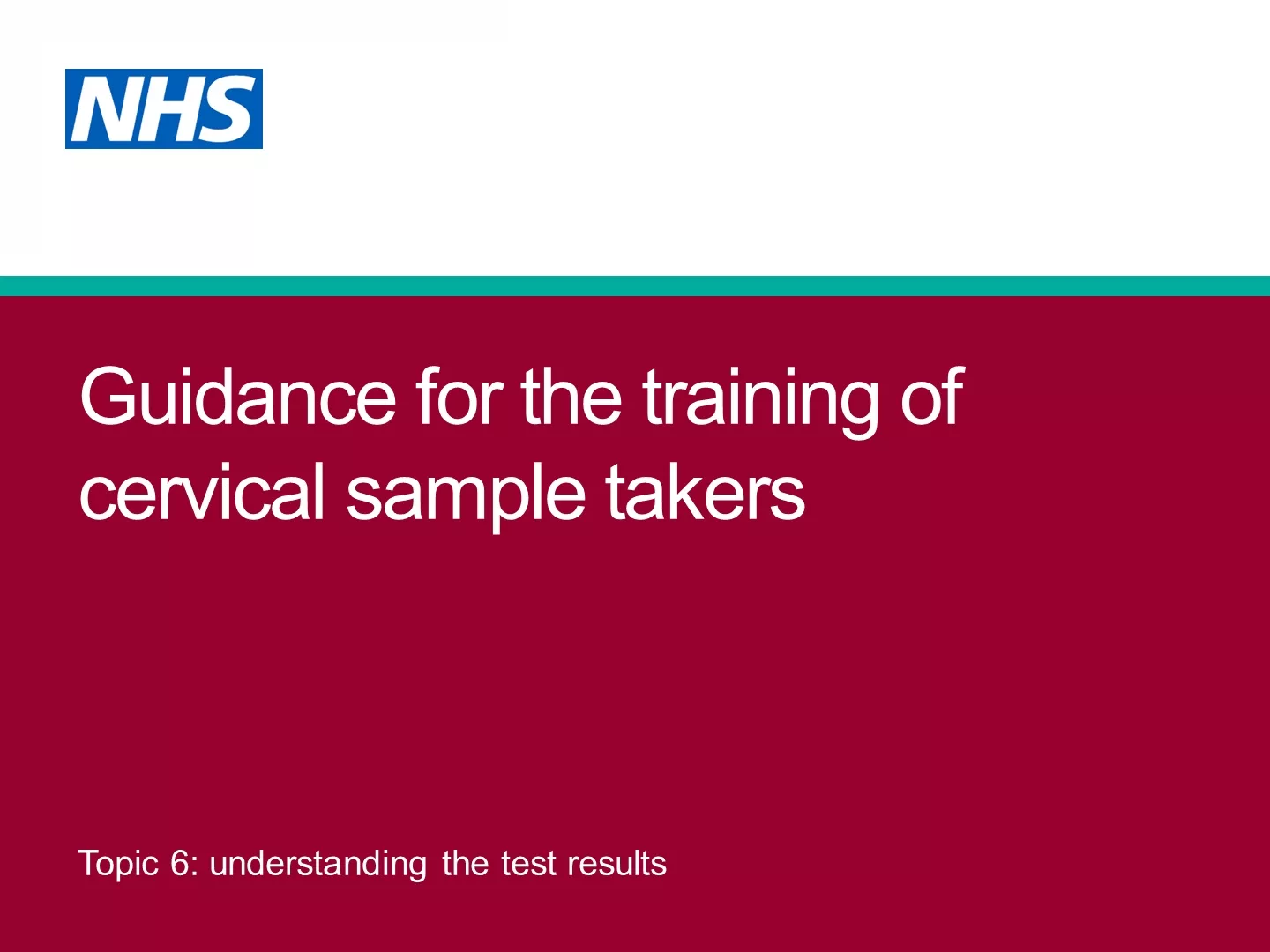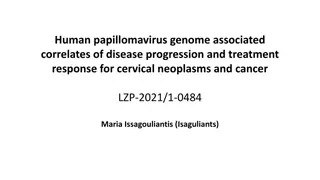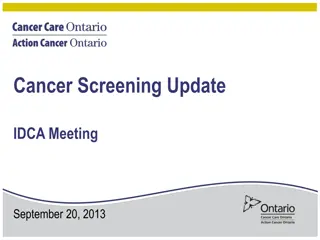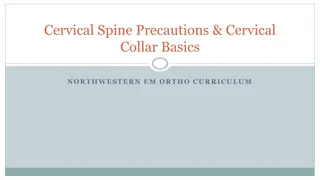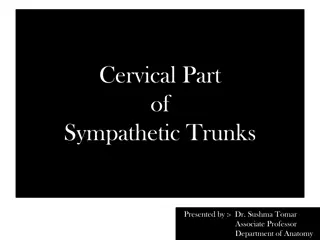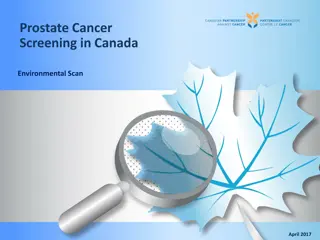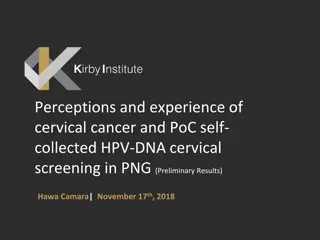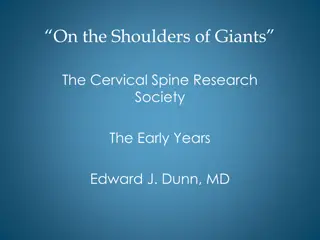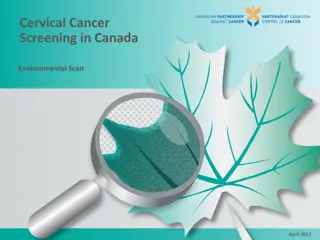Smear Tests for Cervical Cancer Screening
Smear tests, also known as Pap tests, are essential for early detection of cervical cancer. Learn about the procedure, screening guidelines, liquid-based cytology, ideal timing for the test, and what infections it can detect. Stay informed about the importance of regular screenings to safeguard your health.
Download Presentation

Please find below an Image/Link to download the presentation.
The content on the website is provided AS IS for your information and personal use only. It may not be sold, licensed, or shared on other websites without obtaining consent from the author.If you encounter any issues during the download, it is possible that the publisher has removed the file from their server.
You are allowed to download the files provided on this website for personal or commercial use, subject to the condition that they are used lawfully. All files are the property of their respective owners.
The content on the website is provided AS IS for your information and personal use only. It may not be sold, licensed, or shared on other websites without obtaining consent from the author.
E N D
Presentation Transcript
How to do record a smear test and some practical tips
Cervical cancer Commonest form of cervical cancer is Squamous Cell Carcinoma Strong correlation between HPV and smoking Week co-factors: oncogenes, lower immune response and oral contraceptive pill (COC) Much rarer form of cancer, Adenocarcinoma, is not related to intercourse
Squamous cell cancer of the cervix <1000 deaths per year with cervical cancer Breast 14,500, lung 10,000, bowel and ovarian cancer more common. BUT CaCx has simple safe screening test to detect early warning changes in the cells which can be treated to prevent cancers. Greek doctor (George Papanicolaou) invented smear test over 60 years ago in USA. Pap test Collects cells from squamo-columnar junction of the cervix
NHS CSP 1998 DOH required all English Health Authorities to set up a screening programme for women 20-64 Smears done at least 5 yearly Current guidelines are 25-64y and 3- 5yearly intervals depending on age.
Why change of age? Cervical cancer very rare in under 25 s Maturing cervical cells can mimic abnormal cells Inflammatory cells more common in younger women Lead to over treatment in the past Lead to unacceptable risk and side effects of treatment No change to age in Scotland and Wales
Liquid based Cytology Method of choice used by most areas now in UK Thin Prep or Sure Path methods available Samples taken with a soft broom Important only rotated one way (other wise material will be removed) Rinse broom head in vial of liquid (some areas removed the head of the broom and leave in the vial )
When to take a smear Mid cycle is best BUT Any time in the cycle permissible as long as not bleeding/heavy discharge If discharge seen treat before taking smear
Does the test identify STIs? May show Candida, trichomonas, HPV,actinomyces or non specific bacteria Doesn t detect Chlamydia, gonorrhoea or HIV Good practice to discuss sexual health at time of test and offer swabs at the same time and further information about local DOSH services If taking swabs do smear test first to ensure enough cells on the sample
Equipment Bivalve vaginal speculum of various sizes (virgin to winterton) Consider woman's age, build, degree of relaxation Transport medium Appropriate spatula (broom/brush) Choice of spatula if wide ectropian will need different spatula as well as broom Request form: use Open Exeter for pre printed Transport bags Good illumination
What information is required? Check/record: Patient name Address Post code DOB NHS number GP details ID number ( smear takers code) Date of last smear Relevant past history LMP COC/POP/IUD/IUS/HRT Abnormal bleeding Visualisation of cervix TZ sampled? Abnormalities?
Procedure Explain process and obtain consent Explain possible outcomes and how results will be communicated and actioned Discuss HPV testing and potential outcomes/actions Complete request form Set up area with required equipment Position patient and light Insert speculum ( warmed in water of light lubrication with water based lubricant NOT KY jelly)
Assess cervix squamous epithelium is pink and columnar epithelium is red When columnar epithelium is seen on the ecto-cervix this is called ECTOPATHY/EVERSION White spots on the cervix are NABOTHIAN follicles and are benign Polyps ( fleshy growths) are benign often removed if they obscure the TZ Cancer has sweet sickly smell and the cervix feels spongy Do not clean the cervix or wipe away mucous Visualise TZ and firmly rotate broom in the Os through 360 degrees twice- sample 1cm adjacent to TZ .
Inadequate smears: what went wrong? Squamous cells too scanty Insufficient material for assessment Cytoloytic smear taken in second half of cycle ( more common with COC users) Contamination with lubricant/vaginal cream/spermicides- clogs up slides Large endometrial cells (menstrual cycle blood) Brush not mashed in pot quickly enough (dry cells) Only endo-cervical cells seen TZ not properly identified
What can women do to avoid inadequate results? Avoid bathing with soap/detergents before smear No douching Shower fine No talc Avoid unprotected sex 24 hrs Correct time of cycle If used vaginal pessaries for thrush wait until next cycle before having smear If vaginal atrophy is a problem ask for per smear treatments with HRT pessaries/gel prior to testing
How avoid repeat inadequates ? Possible cause Cervix not visualised Proposed solution Visualise clearly before taking smear Do not swab cervix Scrape firmly, a little blood rarely obscures Mash broom asap. It is not sufficient to just put broom in pot Treat and repeat smear at 3m Cervix swabbed, cells discarded Cervix not scraped Material not transferred to pot quickly enough Discharge/infection present
Consent Need to obtain informed consent Open honest accurate information Inevitable there will be some false positives and false negatives Discuss how these risks are minimised
How to assess capacity to consent Need sufficient time talking and listening to woman to determine levels of understanding Explain in a way that the woman is likely to understand the intervention, alternatives, risks and benefits Involve someone who can advocate for the woman? On what basis have you decided that she cannot consent? Discuss your concerns with someone who knows the woman well and ask them what they think the woman's views and wishes are Document!
